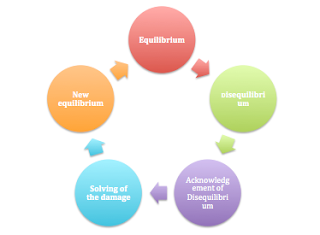Story and Narrative
Story and narrative are surprisingly two different aspects of storymaking, whether it's in a book or through the media. One thing that we can establish, is that they are both important and are used to create an effect on the audience that is long lasting.
The story is the events that occur within the film or text. It will give the audience information about the setting, characters and what is happening in the film. The story is usually built up over time to captivate the audience into the film in the way the director/writer intended it to be.
The story is the events that occur within the film or text. It will give the audience information about the setting, characters and what is happening in the film. The story is usually built up over time to captivate the audience into the film in the way the director/writer intended it to be.
Whereas, the narrative is how the story is told. This is mainly looking at the structure of the story, the themes and how it is presented. There is a basic structure to how a story is narrated and this includes a beginning, middle and end, but there are other ways in which a story can be narrated.
Todorov's narrative theory:
Tzvetan Todorov has proposed a theory in which he looks at the conventional structure of the narrative and how stories/plot lines should follow these 5 steps:
- All stories begin at equilibrium in regards to the theory. At this point, there is no major event occurring in order to build tension, and characters and settings are introduced.
- Disequilibrium occurs when an issue has arisen that disturbs the equilibrium of the story. At this point, the audience may start to gain information of the situation and tension begins to build,
- The characters within the story will recognise the issue and will act upon it. At this point, tension is at a high.
- Then, the characters will try to resolve the disequilibrium.
- A new equilibrium is made once the problem is solved, but the original equilibrium can also be restored. The tension is low and the aftermath of the issue can be seen at this point.
Many films follow this theory such as Sweeney Todd. However, some don't. Some films can start at disequilibrium and end at a new equilibrium or end at a disequilibrium instead. This is more common with horror films due to the fact that the writers want to distress the audience/characters from an early stage.
Claude-Levi Strauss:
Strauss' theory looks at the binary oppositions between themes within a story. It is said that this is used to show conflict between opposites and to drive the narrative. Obvious examples include, good vs evil, light vs dark, happy vs sad, etc..But this can be used to show contrast between character traits.
Roland Barthe's Enigma code:
Information of the plot is refrained from the audience within a film to make the audience question the story and the narrative. This makes them want to watch more of the film in order to find answers for their queries and ideas. If left unanswered, then the audience can become agitated, but horror films tend to get away with a few questions unanswered because it allows the tension to continue. Even after the film has ended.
Vladimir Propp:
Propp states how narratives of a story can be incorporated into specific types of different characters. Character types can include:- Hero
- Villain
- Helper
- Donor
- Princess
- Dispatcher
- False hero/villain
Each one is seen more throughout different genres. Heroes
and villains are more noticeable in action films rather than romance. Within
the horror genre, there is definitely a villain, a hero, a helper and princess.
However, a false hero can be included if the writer feels that they are suited
for the story.



Comments
Post a Comment